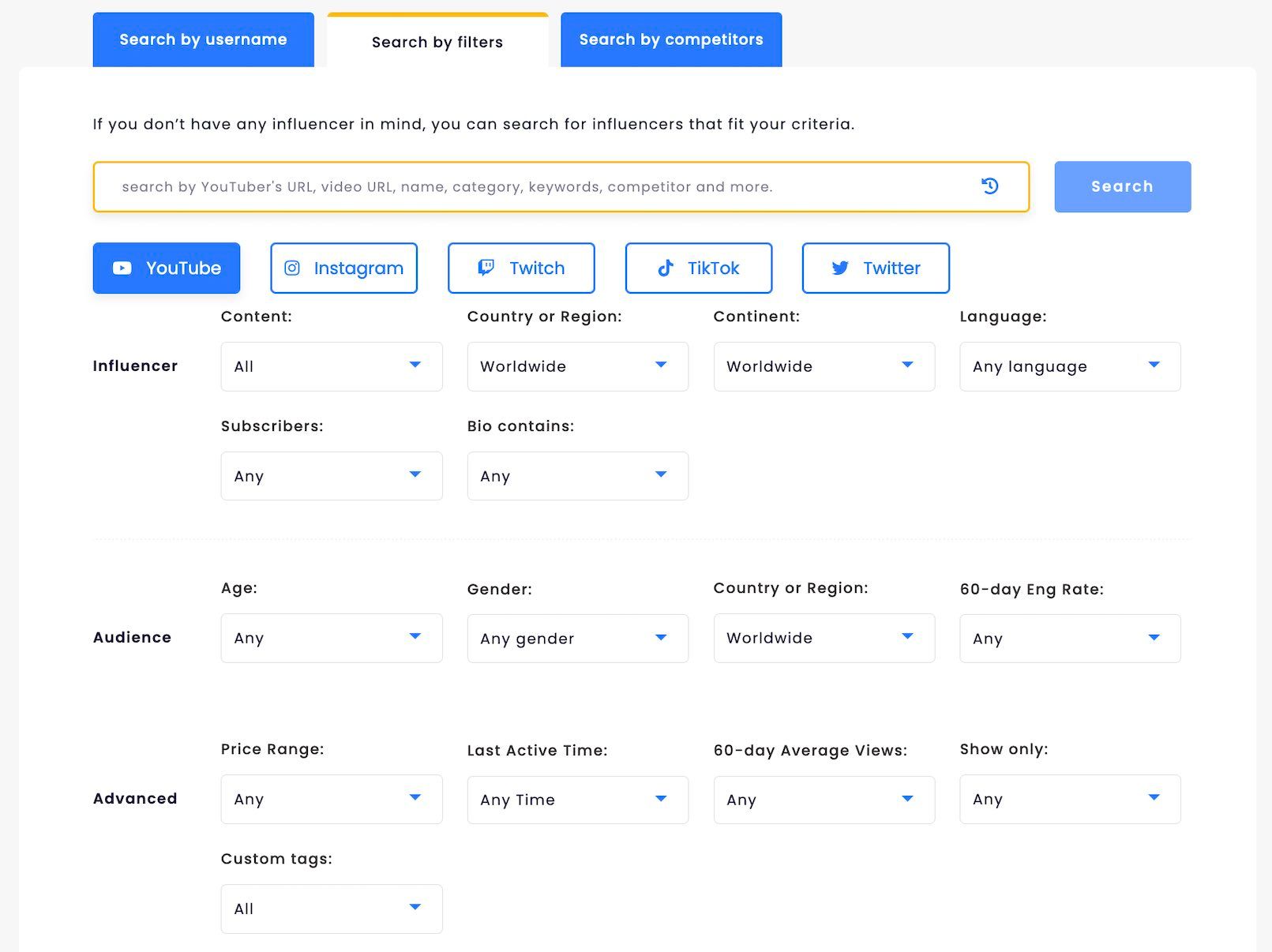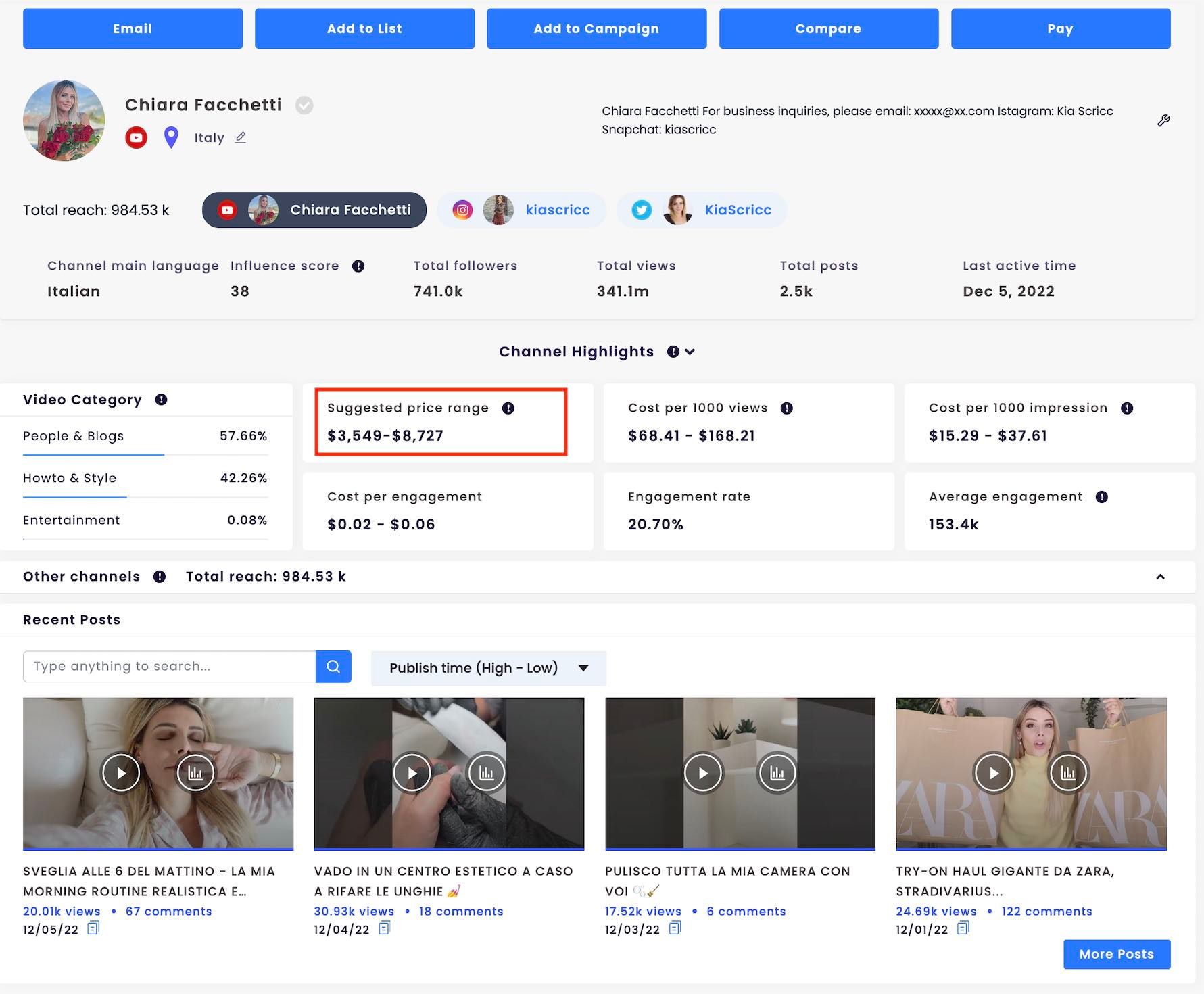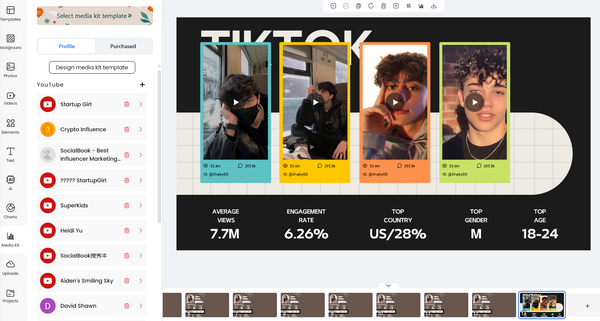When it comes to YouTube, there's a lot of competition out there. With over a billion active users, chances are your target audience is already watching videos on the platform.
So, how do you make sure your content stands out?
One way to do this is by conducting competitive research. This involves analyzing what other successful channels in your niche are doing and then applying those insights to your own channel.
In this guide, we're going to cover everything you need to nail YouTube competitive analysis. Let's get started.
What's Wrong With the Old Ways of Doing YouTube Competitive Research?
There's a reason why competitive research is such a vital part of any business strategy—it allows you to understand what your competition is doing and how you can stay one step ahead.
Some of the most common methods for conducting research include:
- Looking at your competitor's channel to see what they are doing
- Searching for specific content using keywords
- Using free tools, like YouTube Analytics, to collect some data
- Evaluating their audience to see what content they are engaging with
But the biggest problem with conducting research this way is that if you don't know your goal and which metrics you should be paying attention to, you'll find yourself spending countless hours collecting inaccurate data.
Although influencers and brands both conduct competitive research, they each have different goals, making them take slightly different approaches to their research. Let's take a closer look at the goals for each group and the metrics they look at.
Brands
Typically, the goal of conducting YouTube competitive research for brands is to understand their competition's overall marketing strategies and budget. They want their research to answer the following questions:
- What strategies and tactics are my competitors using to reach their target audience?
- How are they using their unique selling point (USP) to position themselves as an industry leader?
- How are they allocating their resources?
To answer these questions, they look at metrics that focus on this specific information, such as the number of subscribers, video views, uploads per month/week, engagement rate (likes, comments, shares), viewer demographics, traffic sources, and influencers.
Influencers
Influencers, on the other hand, are more focused on their competition's approaches to content creation and their audience. They need their research to answer:
- What's my competitor's reach and influence?
- What type of content do they produce?
- How often do they produce it?
- What do the audience demographics and psychographics look like?
- Is this audience a good fit for the content I'm creating?
To answer these questions, they focus on metrics like search ranking, keyword research, video tags, views per video, uploads per month/week, average watch time, audience retention, and content type.
The Catch 22
Even if you understand the goals of your analysis and tailor your research methods to track the right metrics, you still won't be able to collect everything you need by using the old way of conducting your research.
Why? Because conducting keyword research, using Google searches, and sifting through hours of content takes time. And those free tools that are meant to help you often don't:
- Have access to fresh or accurate data
- Track the metrics that truly matter
- Use extensive databases
You'll end up investing in dozens of tools to ensure that you're collecting accurate and actionable data. Or you could opt for a platform that does it all, saving you time and energy so you can create more effective strategies.
How Savvy Brands & Influencers Conduct YouTube Competitive Research in 2023 and Beyond
Brands and influencers that are serious about keeping tabs on their competition use SocialBook—a tool that makes it easy to track and analyze data about competitors' videos (volume, performance, audience, etc.).
Here's a step-by-step guide showing you how simple it is to conduct YouTube competitor research using SocialBook.
Step 1: Discover Competitors
The first step is to identify who your competitors are. Even if you have a good handle on this, it's still worth revisiting this step from time to time. After all, new creators and brands pop up all the time.
The easiest way to do this is to use a keyword; however, you can also use a specific content creator, category, name, or URL, and search on the all-in-one influencer database SocialBook.

You'll also have the opportunity to refine your search by filtering by location, subscribers, activity, and more.
Step 2: Explore Existing Content For Your Search
Now it's time to look at what content already exists for your search term. This will give you an idea of the current landscape, including how many influencers are in the space and the reach.
Additionally, it allows you to see what content resonates with audiences so you can use some of their ideas in your content strategy.
Clicking on a specific creator will bring up an advanced profile page that has access to dozens of useful metrics that will help you determine if this YouTuber is a relative competitor—which brings us to the next step.
Step 3: Analyze Competitor Channels & Content
Now it's time to take a closer look at individual channels and pieces of content. As we just mentioned, clicking on a competitor will bring you to a detailed creator profile with every metric you need to measure the channel and YouTuber.

You'll be able to see other brands that particular creator works with and view the specific videos that mention those brands.
You'll also be able to see exact demographic data about the creator's audience, which will help you determine if their audience matches your target.
Here's a quick video showing you exactly how it works and more:
And if that wasn't enough, SocialBook gives you access to additional metrics that break down how well that audience interacts with a particular video.
Step 4: Track Your Competitors from Your Dashboard
Once you've identified your competitors, it's time to add them to your competitor analysis dashboard on the SocialBook Checker Chrome Extension.
You can type the names manually or conduct another advanced search to filter through our databases to find recommended competitors.
When they are all added to your list, simply click on the comparison button to see how each competitor stacks up with your own channel. You'll have granular access to total views, subscribers, videos, and more.
You'll even be able to see cumulative or daily totals, so you can easily identify spikes or trends in your competition over time.
Additionally, you'll have a bird's eye view of their video's performance, including views, likes, dislikes, and comments.
To see this in more detail, check out this video:
Best Free & Premium Tools for YouTube Competitor Analysis
Competition for eyeballs is fierce on YouTube, and if you're looking to get an edge on the competition, you need to use the best tools available for competitor analysis.
We've selected the best competitor analysis tools for YouTube, both free and paid.
SocialBook
Best premium tool

SocialBook is an all-in-one social media and influencer management platform that provides insights into YouTube channels and videos. With SocialBook, you can:
- Research your competition
- Track your performance
- Make data-driven decisions using real-time data
What sets SocialBook apart from other YouTube competitor analysis tools is its ability to build competitor lists that tracks and compares multiple channels simultaneously.
This is a huge time-saver, as you won't have to switch between different tools to get the necessary information.
In addition, SocialBook provides an overview of your competitor's social media activity—not just YouTube. This gives you a well-rounded view of their online presence and can help you better understand their audience.
Social Blade
Solid free alternative
Social Blade is a website that provides detailed statistical information on YouTube channels and videos. Use this tool to help you:
- Identify which pieces of content are performing the best
- Benchmarking your channel against others in your industry
- Get a breakdown of statistics on individual videos
Social Blade's compare feature allows you to compare the performance of up to three YouTube channels side-by-side. This is incredibly useful for identifying areas where your competitors are outperforming you and for developing strategies to close the gap.
5 Powerful Tips for YouTube Competitive Analysis
Whether you're looking to improve your brand's visibility or drive more conversions, taking a close look at your competition can help give you the edge you need to succeed.
Here are 5 little-known tips for YouTube competitive analysis that can help you get started.
1. Identify Your Competition's Content Strategy
By understanding your competition's content strategy, you can adapt and improve upon it to give your own channel a better chance of success. You want to look at things like:
- What kind of videos are they making?
- How often are they releasing new videos?
- What topics are they covering?
- How are they driving traffic to and from their platform?
2. Monitor Their Activity Across Multiple Social Channels
In addition to monitoring their YouTube channel, it's also a good idea to monitor your competition's activity on other social media platforms. This will give you a good idea of what kind of content resonates with their audience and what messaging they're using.
- What platforms are they using to promote their videos?
- How often are they posting?
- What kind of content are they sharing?
3. Analyze Their SEO Techniques
YouTube ranking algorithm is constantly changing, so staying on top of your competition's video SEO is important.
- What keywords are they targeting?
- What kind of titles and descriptions are they using?
- Are they using keywords in their titles and descriptions?
- Are they tagging their videos properly?
4. Assess Their Engagement Levels
It's not enough to just take a look at your competition's number of subscribers and views. You also need to understand their engagement levels.
- How many people are liking, commenting on, and sharing their videos?
- What kind of comments are they getting?
- Are people talking about the videos on other social media platforms?
5. Learn From Their Mistakes
Use video analytics to identify what's working well for your competition and what isn't. If you see a video that doesn't perform well, take note of what went wrong and try to avoid making the same mistake with your own videos.
Look at things like:
- Did they promote their video on social channels?
- Are their videos SEO optimized?
- Is it the right content for their target audience?
Closing Thoughts
Armed with these steps and tools, you're ready to do your own YouTube competitor analysis like a pro. Just remember that this process is never "done."
As your competitors change their strategies (which they will), you need to keep up with them and adjust your plans accordingly. That's why tools like SocialBook make this whole process feel effortless.
With SocialBook, you can easily keep tabs on your competition and make sure you're always one step ahead. So what are you waiting for? Try SocialBook today!







